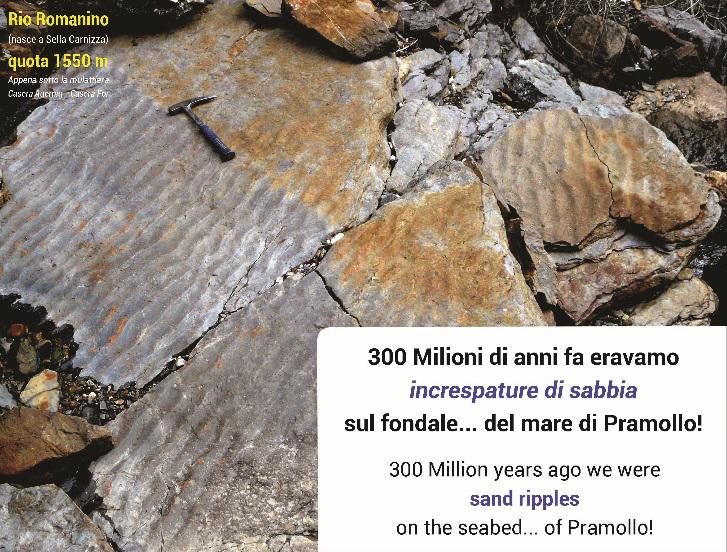At this point another stream flows, which affects the rocky succession of the Upper Carboniferous and exposes it. You can see the large surface of a layer of sandstone about 15 meters lower than the mule track. The layer is still horizontal, and its surface forms a series of symmetrical and parallel ripples. These are small “sand ripples”, 1-2 centimetres high, generated by the movement of sand on a seabed just a few meters deep. Their symmetrical pattern reveals that they were produced by oscillating wave motion and not by a current. All this happened around 300 million years ago. It would be worthwhile to reach it, but some caution is required.
Search
Recent Posts
- The temporary exhibition “The Wonders of the Underworld – Ampezzo, 20th June 2020
- The Geological Museum in Ampezzo opens next Saturday
- The temporary exhibition “Fossil fish from the Friulian Alps” opens again
- Coronavirus Emergency – extraordinary closing
- Presentation conference – book “INSIDE THE CARNIC ALPS” – Udine, 25th June 2019

